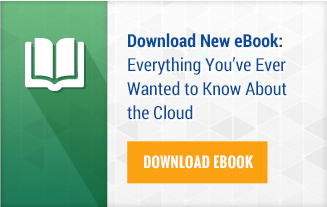This blog is a joint collaboration between Ivan Maddox and Susan Parks.
Cloud computing has rapidly become the method of choice for countless applications across many industries. Insurance is a relative newcomer to cloud computing, but most software solutions for insurance now at least offer a cloud option (if it’s not entirely based in the cloud). However, there are still concerns that cloud computing is not the right technology for insurance solutions. Those concerns are usually based on a misconception, though. To help clear things up, here are four common myths about “the cloud” debunked.
Myth #1: It is unreliable.
The opposite is usually the case. Most providers of cloud services (most commonly, Microsoft and Amazon) bend over backwards to offer backup options, and the cloud can actually be more reliable than other types of infrastructure platforms. The cloud provider can easily back up data to multiple locations to provide an additional level of protection through redundancy. Usually, the cloud service provider and the application vendors will automatically send you emails updating you on critical events.
Myth #2: It isn’t secure.
Security is necessary for any infrastructure platform to protect critical data and information. In many cases, the cloud can offer safeguards that traditional solutions do not. Cloud services offer additional layers of protection and encryption, and are a priority for cloud providers as their success is dependent on this.
Myth #3: There are hidden costs, so it ends up being really expensive.
In most cases, the cloud model saves dollars for end-users in IT operations, software installation/implementation, and maintenance. Software solutions built on a cloud platform have their pricing structure well-defined, which really enables pure subscription-based (i.e. cheaper) pricing to end users. Further, because cloud-based services can be scaled up or down based on demand, costs to end-users can easily reflect their actual usage, rather than a beginning-of-year estimate. And most obviously, end-users of cloud-based software don’t need to purchase expensive hardware systems. The only case where cloud-based software might be more expensive is if the software is charging by the hour, and very few insurance solutions are priced like that.
Myth #4: It provides less flexibility and control.
Again, the opposite is true. Insurers are spread all over the place, so using cloud-based software (like Intermap’s InsitePro, for example) enables greater flexibility and control with a single system, rather than with a collection of systems in various offices. For cloud-based software, users only need an Internet connection, whether it’s in an office, a meeting room, or the coffee shop downstairs. Control is maintained uniformly, which is very difficult to achieve across multiple physical locations.
Still a little fuzzy on this whole cloud thing? Download this free eBook, “Everything You’ve Ever Wanted to Know About the Cloud (but Were Afraid to Ask).”

